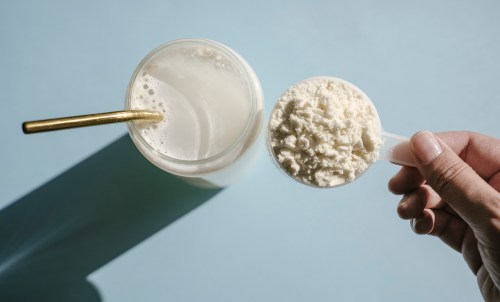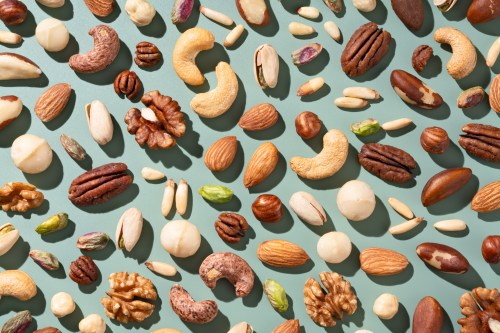Our editors independently select these products. Making a purchase through our links may earn Well+Good a commission
Depending on your taste preferences, certain spices—including but absolutely not limited to oregano, cayenne, and cinnamon—may be staples in your pantry. One less common spice that you may not keep in stock is saffron. Maybe that’s because you’ve yet to try it and aren’t sure what dishes it pairs well with… or perhaps because it’s known to be the most expensive spice in the world.
Experts in This Article
registered dietitian nutritionist and founder of Glow+Greens
registered dietitian and nutritionist
So what, exactly, is the deal with this luxurious and often elusive spice? Ahead, two dietitians share the benefits of saffron, how it can inspire your home cooking, and more.
What is saffron?
Saffron derives from the dried stigmas of the plant Crocus sativus L., explains Brooklyn-based dietitian Maya Feller, MS, RD, CDN. “The dried stigmas look like threads or strands, are often a bright reddish-orange, and are used throughout a number of cooking applications,” she continues.
As for the taste, Feller says it’s challenging to describe. “It’s earthy yet subtly sweet,” as well as “very recognizable and unforgettable” once you try it. Moreover, she notes that the flavor can be polarizing: “Either you love it or you don’t, and most love it.” Gaby Vaca-Flores, RDN, a dietitian based in Los Angeles, adds that saffron “has an earthy bold flavor that can be described as both semi-sweet and bitter.” Flavoring purposes aside, saffron is also used as a natural dye for foods and cosmetics given its signature bold hue.
Health benefits of saffron
“Saffron is made up of four active ingredients: crocin, crocetin, safranal, and picrocrocin. Crocin, a carotenoid, is responsible for its bright yellow/red color,” Feller shares. Saffron is linked to several health benefits, which the dietitian largely credits to its antioxidant and anti-inflammatory properties.
“It’s popularly used in Mediterranean, Middle Eastern, and South Asian dishes like tahdig and Spanish paella,” Vaca-Flores explains. Feller mentions that saffron is sometimes used in soups and stews, especially in some North African cuisines.
“One of the primary ways that saffron benefits health is by way of mood support,” says Vaca-Flores. “Specifically, it’s beneficial for improving mood in people with mild to moderate depression.” According to a 2013 meta review of five randomized controlled trials, adults who supplemented with saffron experienced significantly reduced symptoms of depression compared to a placebo group. Strikingly, saffron was also found to be similarly effective as antidepressant medications. (Note: This definitely doesn’t mean you should ditch your Rx in favor of the spice, but it may be worth consulting your healthcare team to see if dietary saffron could complement your mental health treatment protocol.) More on the mood front: Vaca-Flores says saffron can be your ally against undesired mood changes associated with PMS or PMDD, such as irritability, with minimal adverse effects.
Given its robust antioxidant content, the spice is “associated with an array of health benefits including cognitive support and protection from oxidative stress,” Vaca-Flores continues. Feller adds that saffron’s active compounds are said to be cardioprotective and neuroprotective. A growing body of research demonstrates saffron’s promising benefits to help prevent and sometimes even treat a variety of age-related diseases, ranging from macular degeneration and glaucoma to Alzheimer’s and Parkinson’s diseases.
How to use saffron in cooking
Since saffron is as pricey as it is beneficial, you may want to order a dish that uses saffron before investing in it for your own culinary creations if you’re new to its deliciously earthy flavor. “Saffron is used in a number of spectacular Mediterranean, Middle Eastern, and South Asian dishes, like tahdig and Spanish paella,” Vaca-Flores explains. Feller mentions that saffron is sometimes used in soups and stews, as well as in some North African cuisines.
“One of the primary ways that saffron benefits health is by way of mood support,” says Vaca-Flores. “Specifically, it’s beneficial for improving mood in people with mild to moderate depression.”
Yet if you’re already a fan and want to get more of the mood-boosting, pro-aging saffron benefits in your life, take cues from the dietitians to inspire your own home cooking. Vaca-Flores cites risotto with saffron as her own go-to. Meanwhile, Feller’s favorite is her own branzino bouillabaisse recipe, which you can check out in her cookbook, Eating From Our Roots: 80+ Healthy Home-Cooked Favorites from Cultures Around the World.
Many moons ago, I invested in saffron upon falling in love with paella on a trip to Spain… only to use my $30 stash once after my own paella failed in comparison. Clearly, I’m still not over it, and I implore you to learn from my mistake and put your own to good use. Yes, it’s expensive, but don’t let that deter you from enjoying a culinary excursion around the world straight from your own kitchen.
After all, expanding your palate has the potential to help you live a longer, healthier life—and you may as well enjoy saffron’s diverse benefits and inimitable flavor through the ages. “It’s also very potent, so a little goes a long way,” Feller reassures us.
Sign Up for Our Daily Newsletter
Get all the latest in wellness, trends, food, fitness, beauty, and more delivered right to your inbox.
Got it, you've been added to our email list.











